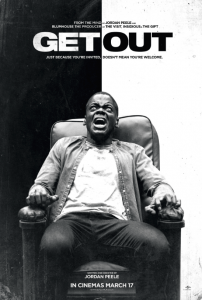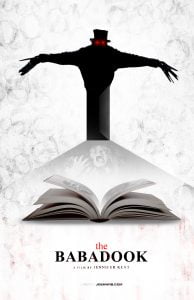Hey there, horror lovers! We know you’re always on the lookout for the spookiest, most bone-chilling stuff out there, which is why we’ve put together a list of the top 5 horror-related topics we think you’ll love.
The Evolution of Horror in Film: From Gothic Classics to Modern Day Thrillers

When it comes to scary movies, we’ve come a long way since the early days. Gothic classics like Dracula and Frankenstein paved the way for the modern horror films we know today. From slashers to psychological thrillers, filmmakers have found new ways to scare us with each passing year.
But what is it about horror that keeps us coming back for more? Some might say it’s the adrenaline rush that comes from being scared. Others might argue that it’s the opportunity to explore our darkest fears in a safe, controlled environment. Whatever the reason, it’s clear that horror has a special place in our hearts (and nightmares).
In recent years, horror has also become a place for social commentary. Films like Get Out and The Purge series tackle issues like racism and classism, using horror as a vehicle to explore deeper societal issues. This shows that horror isn’t just about cheap thrills and jump scares – it can also be a way to provoke thought and inspire change.
So whether you’re a fan of the classics or the new school of horror, one thing is clear – the genre isn’t going anywhere. In fact, with new technologies and techniques being developed all the time, it’s safe to say that the future of horror is looking brighter (or darker?) than ever before.
The Psychology of Fear: Why We Love to Be Scared

Why do we love horror so much, even though it’s, you know, scary? Turns out, there’s a scientific explanation behind it all. Our brains are wired to enjoy the rush of adrenaline that comes with fear, and that’s exactly what horror delivers. We’ll break down the science behind fear, and why it’s so important to our psychological well-being.
Watching horror films can be a way to confront our deepest fears in a safe and controlled environment. It can also be a way to feel a sense of catharsis, or emotional release, after experiencing a particularly tense or frightening scene.
In addition, horror can also serve as a way to explore deeper societal issues. Films like The Babadook and It Follows use horror as a metaphor for mental illness and sexually transmitted diseases, respectively. By using horror to explore these issues, filmmakers are able to create a dialogue and bring awareness to important topics.
So the next time you’re watching a scary movie and your heart is pounding, remember there’s science behind why you’re enjoying it. And who knows, maybe you’ll learn something about yourself in the process.
The Top 10 Scariest Books of All Time
When it comes to horror, movies and TV shows aren’t the only mediums that can scare us. Books have a long history of terrifying readers, from the gothic classics of the 19th century to the modern horror novels of today. Here are the top 10 scariest books of all time (in no particular order):
Dracula by Bram Stoker
This gothic classic is the definitive vampire novel, and it still sends shivers down readers’ spines to this day.
The Exorcist by William Peter Blatty
This novel about a possessed young girl was so scary that it inspired one of the most famous horror movies of all time.
The Shining by Stephen King
This novel about a family trapped in a haunted hotel is one of King’s most enduring works, and its impact on horror culture is undeniable.
The Haunting of Hill House by Shirley Jackson
This novel about a group of people who investigate a haunted house is a masterclass in psychological horror.
Pet Sematary by Stephen King.
This novel about a family who discovers a sinister burial ground in the woods is one of King’s most terrifying works.
Frankenstein by Mary Shelley
This gothic classic about a scientist who creates a monster still resonates with readers today, thanks to its exploration of themes like life and death.
The Silence of the Lambs by Thomas Harris
This novel about an FBI agent who seeks the help of a cannibalistic serial killer to catch another killer is a chilling masterpiece.
The Turn of the Screw by Henry James
This novella about a governess who believes that her charges are being haunted is a subtle and disturbing work of horror.
Ghost Story by Peter Straub
This novel about a group of elderly men who must confront the ghosts of their past is a haunting and atmospheric read.
The Call of Cthulhu by H.P. Lovecraft
This story about a monster who sleeps beneath the sea. It is one of the most influential works of horror ever written.
Whether you’re a fan of classic horror or modern works of terror, these books are sure to leave you scared!
The Influence of Folklore on Horror
Of all the things that influence horror, folklore is one of the most fascinating. From ancient myths and legends to modern-day urban legends, folklore has always been a rich source of inspiration for horror writers and filmmakers. Here’s a closer look at how folklore has influenced the horror genre:
Myths and Legends
Myths and legends are some of the oldest forms of folklore, and they have been inspiring horror stories for centuries. Terrifying creatures and gruesome events fill these stories, from the Greek myth of Medusa to the Norse legend of the Kraken. Many of these myths and legends have become the basis for classic horror monsters, such as werewolves, vampires, and ghosts.
Folktales
Folktales are another form of folklore that has had a significant impact on horror. People pass down these stories from generation to generation, and they often feature supernatural elements. From the Japanese tale of the Yuki-onna to the Irish legend of the Banshee, cultures all over the world feature these stories.
Urban Legends
Urban legends are a more modern form of folklore, but they have had just as much of an impact on horror. Real events often form the basis of these stories, which are passed around by word of mouth. They can be about anything from haunted houses to killer clowns. One of the most famous urban legends is the story of Bloody Mary, a ghostly figure that allegedly appears in the mirror if one says her name three times. In fact, I’d bet you’ve heard of Bloody Mary!
Overall, the influence of folklore on horror cannot be overstated. These stories tap into our primal fears and connect us to our cultural heritage. They remind us of the dark corners of our imagination and the things that go bump in the night. Whether it’s a classic myth or a modern urban legend, folklore will continue to inspire and terrify us for generations to come.
The Dark Side of Technology: Horror in the Digital Age
Technology has revolutionized the way we live, work, and communicate with each other. But with every advance, there’s a dark side, and the horror genre has been exploring the potential horrors of technology for decades. Here’s a closer look at the dark side of technology in the digital age:
Social Media
Social media has become a ubiquitous part of our lives, but it’s also become a breeding ground for scary stories. From cyberbullying to online predators, social media has opened up a whole new world of terror.
Virtual Reality
Virtual reality is the latest frontier in technology. They are already using it to create terrifying horror experiences. VR transports users to other worlds where they can experience horrors that feel all too real.
Artificial Intelligence (A.I.)
As artificial intelligence becomes more advanced, it’s easy to imagine a future where robots turn on their human creators. The horror genre has explored the idea of sinister AI for years. This includes movies like The Terminator and 2001: A Space Odyssey.
Surveillance
With cameras and microphones everywhere, it’s becoming increasingly difficult to maintain any sense of privacy. Unknown forces have been watching and stalking people, leading to stories about it.
Hacking
Horror movies like Unfriended and The Den have explored the topic of hacking, which has become a major threat in the digital age. These movies show how easily our online lives can be invaded and the potential dangers of such an invasion.
The digital age’s dark side inspires horror writers and filmmakers. It taps into our fears of the unknown and reminds us that our reliance on technology can have terrifying consequences. Technology, like social media, virtual reality, and A.I., will continue to be a source of horror in the years to come.
Conclusion
A wide range of influences, from classic literature to modern technology, has shaped the horror genre. However, the ways in which these elements are explored and presented have evolved over time. Over time, the exploration and presentation of these elements have evolved.
From the gothic horror of the 19th century to the technological horrors of the 21st century, the genre has always found new ways to terrify and captivate audiences. Whether it’s exploring the dark side of human nature, the mysteries of the supernatural, or the potential horrors of technology, horror has remained a genre that continues to push boundaries and challenge our perceptions of the world around us.
In the end, horror is a genre that serves a vital purpose in our culture. It allows us to confront our fears and anxieties in a safe and controlled environment, and it helps us to explore the darker aspects of the human experience. It’s a genre that has something for everyone, whether you prefer classic ghost stories or modern-day technohorror. Horror’s power and enduring appeal make it a compelling genre for both die-hard fans and casual viewers alike.
